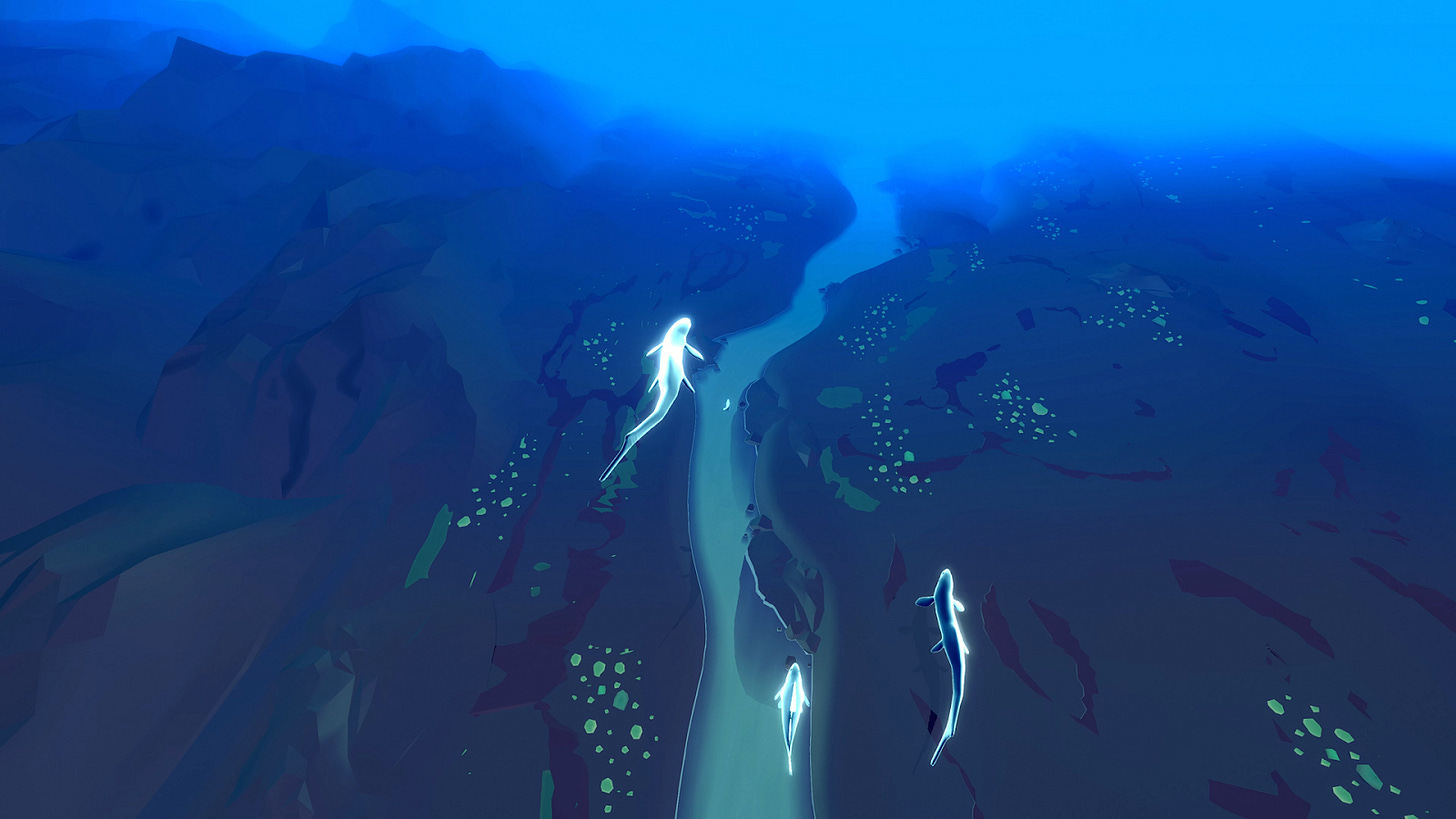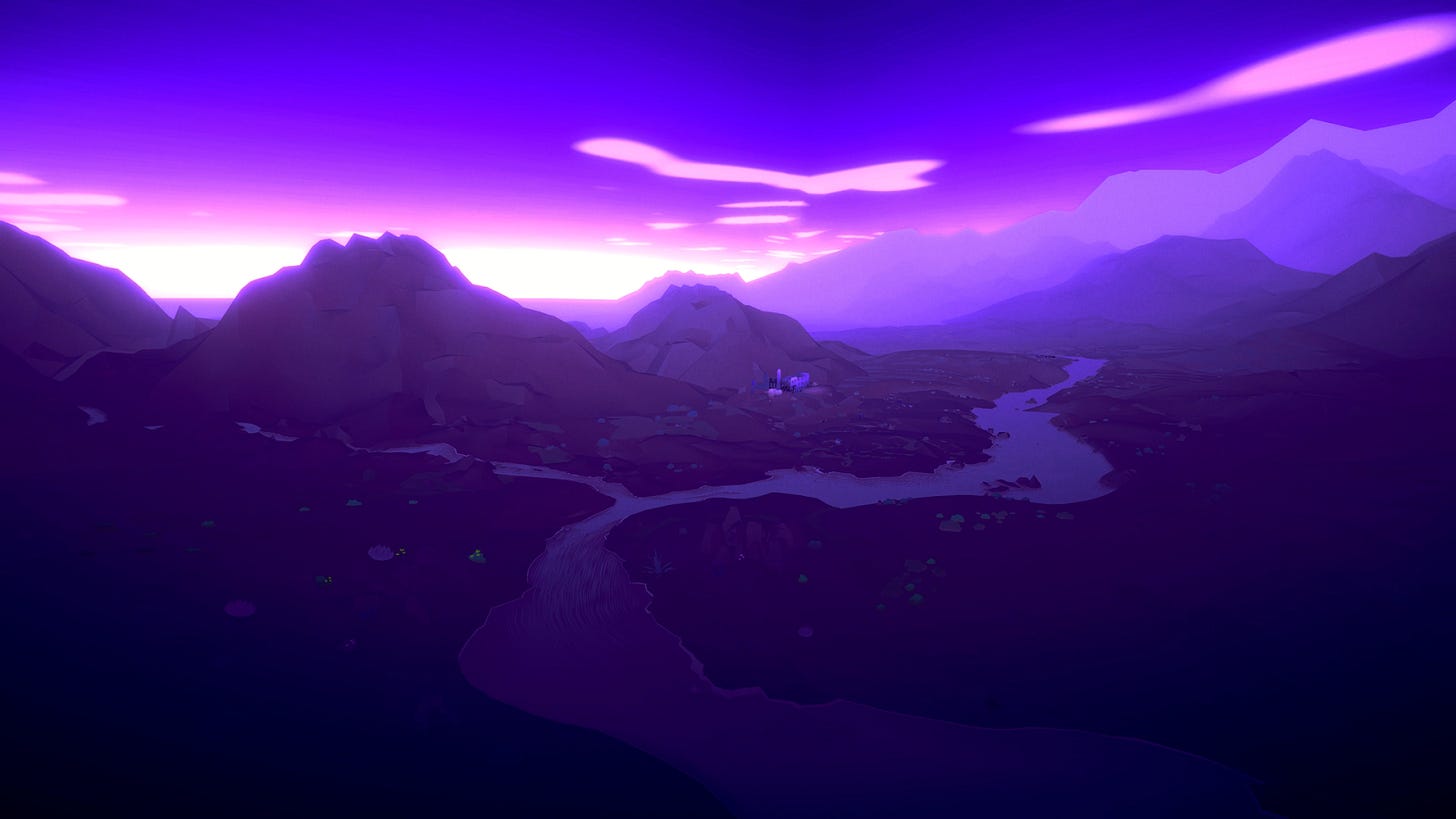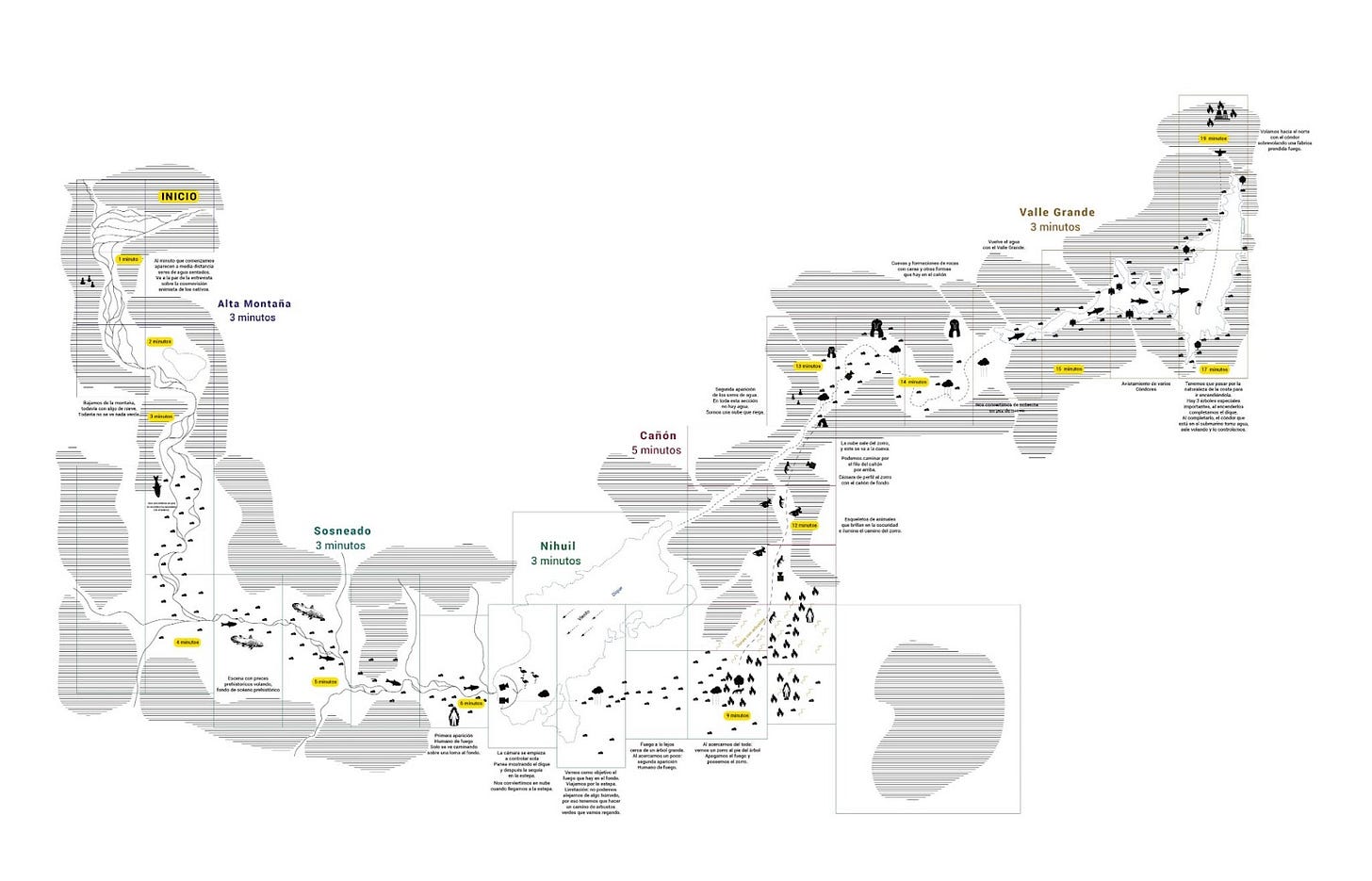By Pablo F. Quarta (Bluesky / Instagram)
You can find and play Atuel for free on https://matajuegos.itch.io/atuel
***
You are a tiny red dot loaded into a Unity scene. Despite Unity being a game engine typically used to develop 3D games, you are flat and two dimensional. Someone hits the scene’s “Play” button and time starts counting away. You begin to move.
You are a tiny red dot, loaded into a Unity scene, moving slowly across a two-dimensional map.
The map is illustrated in black and white and features clean, simple lines that diagram the flow of a river. Its many tributaries join and separate as it runs down the topographical marks of the mountainside and you move inside its representational waters. A grid segments the map into rectangles, regular and standardized. “1 minute” reads a yellow label, indicating how long it will take you to make your way across a stretch of rectangles.
Along your path you see small symbols dotting the map. They look like statues, fish, rocks. You pass alongside descriptions written in text. One says, “We flow down the mountainside, there’s still some snow. We don’t see any vegetation yet.” Another one reads, “We become a fish. The world turns green as we advance.” Far below you, as the tributary lines grow fewer and fewer, you see the markings of a valley, a lake, and a man wreathed in flames. But before you get that far, something happens.
Your tiny red dot crosses an invisible line that triggers the deep, subterranean mechanisms of Unity’s audio manager. A voice starts speaking in Spanish. Its vernacular is Argentinian, its accent from Mendoza. “For the Indigenous people of this land,” the voice says, “the river has a purpose. It has what they call Ngen, it has a spirit, and many spirits dwell within it.”
***
Atuel is a surrealist documentary game about a river and about the climate crisis in the Cuyo Desert of Argentina. It’s a short, meditative, 30-minute game in which you traverse strange, dreamlike landscapes and inhabit different parts of the river’s ecosystem. You play as fish, foxes, and condors, you even play as clouds and rain and as tributaries of the river itself. The game was developed in collaboration with a group of documentarians and throughout it you hear clips of interviews and testimonies from experts such as historians, geologists, poets, engineers, and more. They speak about the past, present, and future of the region, and about how the climate crisis is endangering the historic relationship between the river and the people that live on its shores.
Atuel won the Indiecade 2022 “Innovation in Experience Design Award” and was nominated for A MAZE. / Berlin’s “Most Amazing Award” that same year. It is often praised for its beautiful, open landscapes and its impressionistic, low-poly art style, but before a single asset was modeled and a single color was painted, Atuel was just a two-dimensional map running in Unity.
The map was made early on in the pre-production phase of Atuel’s development as a way to plan out the entire game in a fast, evocative, and intuitive way that allowed for quick iteration. This was essential to do in order to lock down the layout and scope of the game before beginning the more expensive and time-consuming process of modelling 3D assets. In this way, the map became the main blueprint for the game and was also key for prototyping.
It helped to accomplish a few fundamental goals that maps usually provide assistance with, such as:
1. Planning out environments. The landscapes in Atuel are based on the real topography of the region, but clearly it would have been unfeasible to recreate all 550 kilometers of the river’s path. The map made it possible to diagram which segments of the different locations and biomes would be represented in the game and how they would be synthesized and ordered throughout the experience.
2. Planning out events. The map made it possible to locate and detail each event and vignette that occurs throughout the player’s journey. For example, there is a forest fire in the middle of the game that the player must navigate, and earlier on there is a deeply dreamlike scene in which they swim alongside prehistoric fish. Both of these moments were first conceived and depicted on the map.
The exceptional utility of the map, however, came once it was dropped into Unity. This is when it started to help in ways that maps usually aren’t capable of. You see, this is where you, our tiny red dot, come into play:
3. Timing. Atuel is a game about traversal and movement; by creating a tiny red dot that moved along the player’s path at their approximate speed, it became possible to time the duration of each section of the game and of the full length of the experience. This helped with the iteration of individual segments, making sure that they were impactful, moment to moment, and that they flowed into each other without losing the player’s attention. It was also useful for controlling the game’s very limited budget. Due to expensive asset costs, every extra minute of traversal meant more development time and more money.
4. Sound design. Atuel’s entire development began with sound. Before there was anything, there were the interviews; two hours of audio recorded by documentarians. Only 10 minutes ended up in the final game, but these excerpts form the narrative and thematic backbone for the entire experience.
Having you, tiny red dot, moving across the map, allowed this simple, two-dimensional image to have sound triggers. Whenever you crossed one of these invisible lines placed along your path, an audio file would play – an interview, an environmental sound effect, a music track — this allowed for quick prototyping of the entire soundscape and narrative progression of the game. It was easy to move and reorder triggers or to change an audio file, and testing was as easy as putting on some headphones and hitting play. This would have taken much longer and been far more difficult if it had to wait for the development of assets and gameplay.
Since Atuel depends so strongly on creating a meditative and immersive audiovisual experience to draw players into the game and deliver its full effect, being able to test and develop sound and aural progression so early on in the process was crucial for development and for generating the game’s atmosphere and identity.
***
You are still a tiny red dot, loaded into a Unity scene, moving slowly across a two-dimensional map.
You squeeze through two black lines that mark the walls of a towering canyon. Beyond it, the Atuel river opens up and becomes a great lake.
Here, the notes on the margins of the map say that you transform into an Andean condor. You soar high above the negative space that indicates the waters of the lake, and at its center you spot the symbol of a monolithic rock rising up from its depths.
As you fly, the tip of your wing trips the mechanisms of another interview. A voice speaks.
“It seems that every being on this planet, each one of us here, has, I don’t know if it’s an obligation, but a mandate. The mandate to be. The mandate to flow. That mandate, the mandate to flow, is one of water’s most important mandates.”
It is also your mandate, tiny red dot, programmed deep in the lines of your code. To flow.









